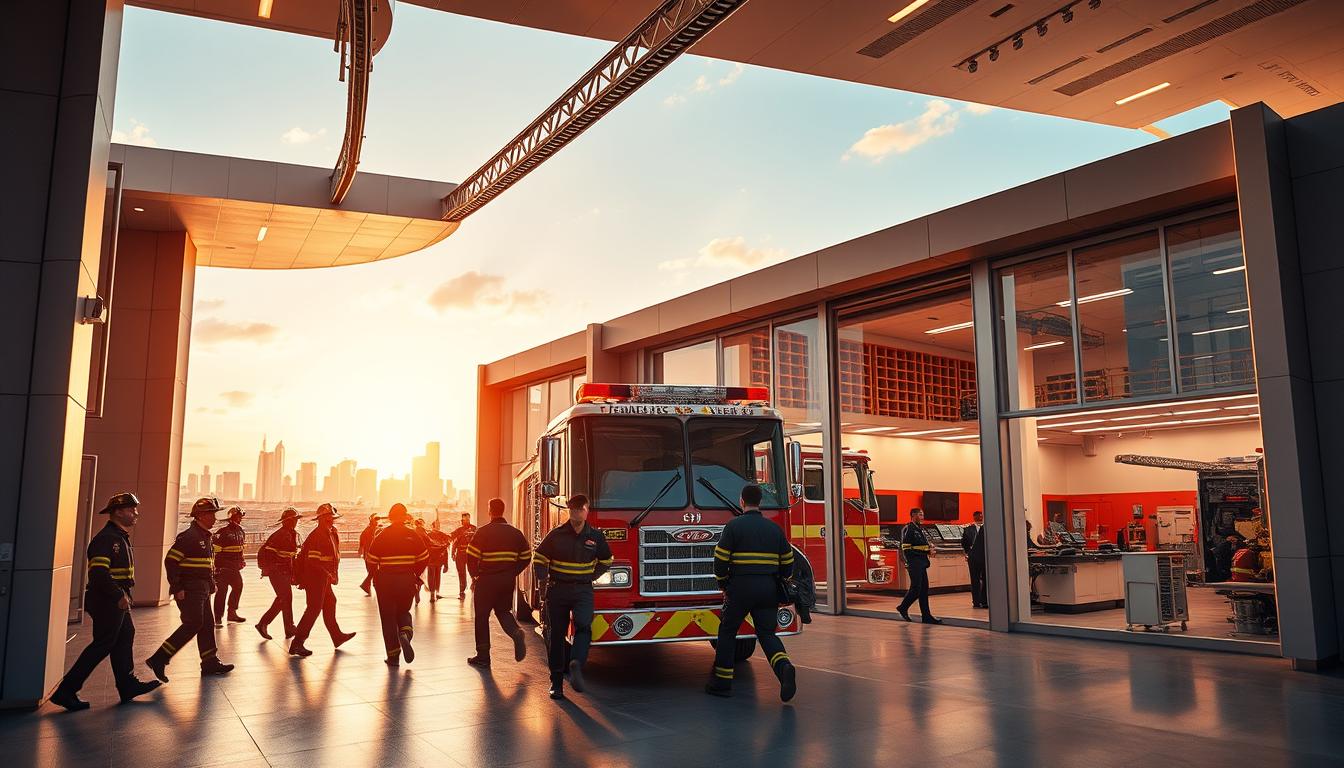In today’s world, keeping everyone safe from fires is key. Fires can happen anywhere—homes, offices, and factories. That’s why we need good fire safety plans.
Fire safety management is all about making plans, following safety rules, checking for risks, and being ready for emergencies. Knowing these basics helps protect our homes, businesses, and the environment from fire damage.
Understanding Fire Safety Management:
Fire safety management is key to reducing risks and improving safety. It involves spotting fire hazards, setting up good fire safety plans, and having reliable response strategies. The core fire safety rules—prevention, detection, and suppression—guide all actions in this field.
Both companies and homeowners must follow these fire safety rules. This creates a safety culture that focuses on preventing fires. Using the right fire prevention strategies is vital for this culture. It’s important for everyone to take these steps seriously.
Key Components of Fire Safety Planning:
Effective fire safety planning has many important parts. It starts with creating a solid fire safety strategy. This plan looks at the risks in a specific place and sets up safety rules. It also names who is in charge of safety.
Fire drills are also key. They help everyone know what to do in a fire. By practicing, people learn their roles and feel more ready. A team that knows what to do can stay safer in a real fire.
When a fire safety strategy and training work together, everyone becomes more alert and prepared. By focusing on these parts, organizations can get better at handling fire emergencies.
Safety: Importance of a Well-Defined Safety Policy:
A well-defined safety policy is key in fire safety management. It helps everyone understand their role in keeping the place safe. It outlines how to spot dangers, who does what, and how to handle fires.
Good fire safety talks make the policy work better. When everyone knows the rules, they work together better. They know what to do in an emergency. Training helps make these rules a part of their daily routine.
Fire Risk Assessment: Why It Matters:
Doing a fire risk assessment is key for both homeowners and businesses. It’s about finding fire hazards and checking the risks they pose. This way, I can see if current fire safety steps are working and where they need to get better.
I do a deep check of the place during my assessment. I look for things that could start a fire, like bad wiring or flammable stuff stored wrong. I also check the fire safety gear to make sure it’s good and works right. By really looking at fire risks, I can make plans to stop fires before they start. This makes places safer from fires.
Fire Prevention Strategies for Homes and Businesses:
Keeping homes and businesses safe from fires is key. For homes, I focus on simple steps like installing smoke alarms everywhere. Regular checks on electrical systems and being careful with flammable items in kitchens and garages help a lot. These actions can greatly lower fire risks.
For businesses, I recommend fire suppression systems to stop fires fast. It’s also vital to train employees on fire safety. Clear escape routes and signs are essential for quick and safe exits. By following these steps, I make sure my family and business are protected, saving lives and assets.
Emergency Preparedness and Response Plans:
Emergency preparedness is key to fire safety. I focus on making sure people know what to do in an emergency. A good fire response plan shows evacuation routes, where to meet, and how to communicate.
I make sure each team member has a clear role. This makes things run smoothly and reduces confusion. Regular drills help everyone get used to the plan, making them more calm in real emergencies.
It’s also important to have safety gear ready. Fire extinguishers, first aid kits, and lights should be easy to find. This way, we can act fast in case of a fire.
Legal Requirements for Fire Safety Compliance:
Knowing the legal fire codes is key for any organization wanting to keep its place safe. Following local fire safety rules is more than just a law; it’s a duty to protect lives and property. These rules touch on building design, fire alarm setups, and keeping safety gear in good shape.
Staying on top of fire safety rules helps my organization spot and fix problems early. This way, we avoid risks and legal troubles that come with not following the rules. By doing regular checks and audits, we can act fast to fix any issues. Keeping fire safety up to par shows our dedication to a safe space for everyone.
Utilizing Technology for Fire Safety Management:
In today’s fast-changing world, using technology for fire safety is key. It’s important for homes and businesses. New tech like automated detection systems and smart alarms is changing how we fight fires. With smart devices, I can watch over things in real-time and get alerts fast, making fire safety better.
Using tech in fire safety does more than just follow rules. It helps lower risks and speed up responses. These advanced systems help me understand fire dangers better. This helps me make smart choices and stay safe.
With more IoT devices and smart buildings, keeping up with fire safety is simpler. Using tech for fire safety means I’m always ready for new solutions. It’s all about keeping people and property safe from fire’s harm.
